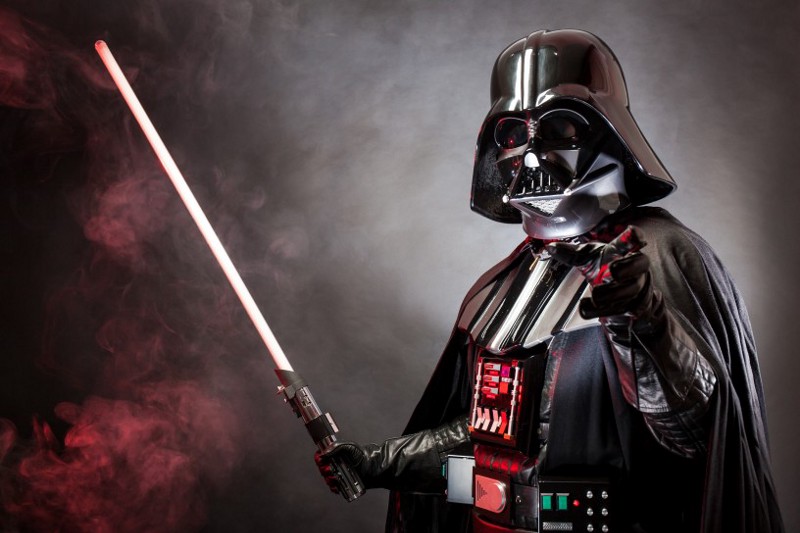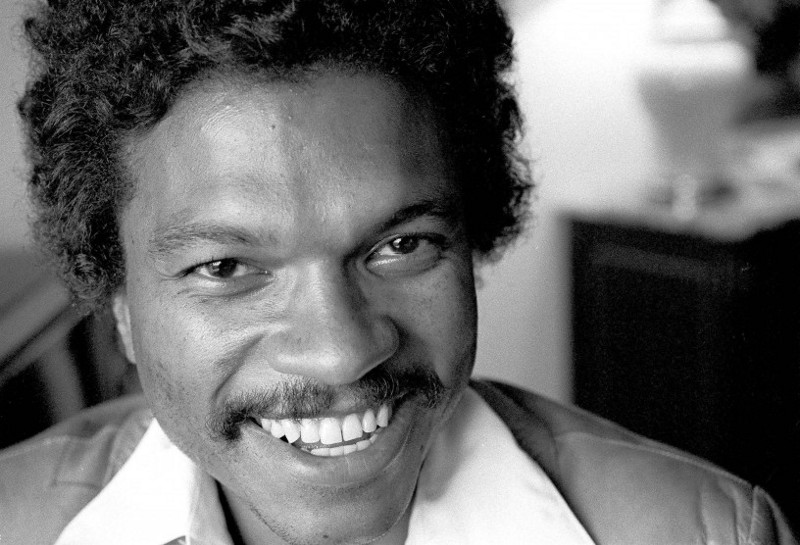Disclaimer: I won’t see Disney’s new film Star Wars: The Force Awakens until tonight, so this post won’t contain any spoilers. In fact, if any of you try to spoil it for me in the comments, I’m pretty sure you must be a Sith. Also, we’re not discussing the prequels here — partly because they have some problematic characters, but mostly because they were just, well, generally awful.
The original Star Wars trilogy has been claimed by people of all political persuasions, with lawmakers from President Barack Obama to Republican presidential candidate Ted Cruz citing it as inspiration and even invoking it during debates on the floors of Congress. Libertarians have also claimed the iconic series as their own, cementing the idea that Star Wars, while far from apolitical, really does have something for everyone.
But as the planet descends into galactic levels of hysteria for Star Wars: The Force Awakens, the latest installment of the epic series that begins showing in U.S. theaters today, it’s worth recalling that the iconic story of a galaxy far, far away is actually rife with some progressive themes that resonate right here on Earth. Although not quite an exemplar of modern progressive values, Star Wars does support some leftist ideas — especially given that it was made in the 1970s and 80s — so we’ve compiled three examples below.
Princess Leia broke down traditional tropes for female characters, and set a new standard for women in science fiction

By today’s standards, the original Star Wars trilogy falls far short of gender equality. The series blatantly fails the Bechdel test — when at least two female characters converse about something other than a man — primarily because women characters other than Leia speak for a grand total of 1:00 minute in the entire trilogy.
But while the series could’ve included more female leaders, it would be a mistake to ignore the cultural impact of Princess Leia, the ass-kicking princess who helped usher in a new era of strong female leads in science fiction. Unlike many historic female science fiction characters who are touted as prizes to be won, Leia arguably turned the classic “damsel in distress” trope on its head: yes, Luke Skywalker, Han Solo, and Obi-Wan Kenobi stage a rescue attempt to save her from Darth Vader’s clutches in A New Hope, but Leia repeatedly plays a crucial role in her own escape, frequently taking action when the men are flummoxed and saving the lives of her rescuers at least once. As she put it, “Somebody has to save our skins!”
Leia’s leadership and responsibility only increases as the series progresses. She serves as a military commander during the Battle of Hoth in The Empire Strikes Back, where she is seen instructing space pilots on combat strategy before battle, and is one of the last to leave the rebel base when the Empire invades. And by the time we get to the Return of the Jedi, Leia has completely reversed the “damsel in distress” paradigm: She’s the one who risks her life to rescue to rescue her helpless lover, Han, whom she finds suspended in Jabba the Hutt’s palace, enduring the space opera equivalent of being tied up — stuck frozen in carbonite.
True, Leia’s character is far from perfect, and while most of Leia’s outfits were devoid of sexualization, she was problematically objectified when she was enslaved by Jabba and forced to wear her infamous metal bikini. But as other writers have pointed out, it’s worth remembering the way that story ends: Leia — without any explicit help from men — chokes the grotesque gangster slug to death with the very chains he used to oppress her, vanquishing a none-too-subtle symbol of male oppression before triggering an explosion that blows him, his chauvinistic friends, and his entire sail barge to smithereens.
Perhaps Fisher put it best earlier this month, when the Wall Street Journal asked her about rumors that Disney will stop producing any merchandise featuring her iconic aluminum swimming wear. When the Journal inquired what she would tell a father who asked, “What am I going to tell my kid about why she’s in that outfit?”, her response spoke directly to the empowering spirit of her character.
“Tell them that a giant slug captured me and forced me to wear that stupid outfit, and then I killed him because I didn’t like it,” she said. “And then I took it off. Backstage.”
A government that shifts away from democracy and adequate representation is probably going to end up being pretty evil

Even without the backstory provided by the prequels, the political context of Star Wars is pretty clear: The galaxy used to be organized as a republic, where planets had adequate representation within a senate structure, until the Empire took over and smashed the old system in favor of one that grants a (super evil) Emperor unparalleled power. Princess Leia briefly identifies as a member of the “imperial senate” in the beginning of A New Hope, but a military commander later reveals that this check on the emperor’s power — such as it was — has been extinguished, saying, “The Imperial Senate will no longer be of any concern to us. I’ve just received word that the Emperor has dissolved the council permanently. The last remnants of the Old Republic have been swept away.”
The result is the dark, oppressive, and restrictive force that is the Empire, where Darth Vader and his generals consistently ignore the wishes of everyday citizens — people who would have otherwise been able to voice their concerns — by basically doing whatever they want. Over the course of three films, we watch the Empire destroy an entire planet as a means of interrogation (in front of its representative, Leia), forcibly occupy several planets and cities (Cloud City, Endor, etc.), and generally wreak havoc in the vacuum created by a lack of proper political representation.
In world where some right-wing American political leaders are actively working to make it harder for some U.S. citizens to express their voice at the ballot box, Star Wars offers a cautionary tale of what happens when political systems suppress dissenting views — and it ain’t pretty.
Star Wars ultimately argues that diversity makes any movement stronger

It would be a mistake to call Star Wars a trailblazing champion of racial equality. The vast majority of leading roles, both good and bad, are filled by white men, and species such as the Sandpeople are arguably racist stereotypes. (We’re not even discussing the prequels here, which had some really, really racist stuff going on.) Ancient nerd feuds aside, the original Star Trek series was far more groundbreaking in its attempt to imagine a future devoid of racial divisions, such as being one of the first shows to depict an interracial kiss.
Still, Star Wars wouldn’t be Star Wars without Lando Calrissian, a prominent African American character portrayed by Billy Dee Williams. Initially described as one of Han’s fellow “scoundrels,” Lando turns out to be one of the series’ more complicated — and interesting — characters, initially selling out our heroes before saving them all and becoming a hero in his own right. He, too, climbs to the rank of general within the Rebel Alliance, and while there aren’t that many people we’d trust piloting the Millennium Falcon other than Han, we know it’s in good hands with Lando.
Meanwhile, Luke’s tutelage under Yoda breaks down traditional conceptions of white male power, with the aging, diminutive hermit proving himself to be far more powerful than Luke could ever dream to be.
What’s more, by the time we get to Jedi, it’s hard to ignore the stark contrast between the Empire, made up almost entirely of white men (Darth Vader, although voiced by black actor James Earl Jones, is eventually revealed to be the whitest guy ever), and the Rebellion, whose ranks include humans of different races as well as a kaleidoscope of species. After all, the Battle of Endor couldn’t have been won without Chewbacca, Admiral Akbar, Nien Nunb, and the unexpectedly militarily adept Ewoks. When the second Death Star is destroyed, the Rebellion’s greatest leaders don’t celebrate from ivory towers, but with the Ewoks, joining them in memorializing the overthrow of an oppressive, colonial power.
Of course, Star Wars definitely had some problematic characters (and the multitude of valid criticisms in this area appears to be one thing that director J.J. Abrams took to heart in casting for The Force Awakens). Regardless, the overall implicit message is that diverse coalitions, bound together for a common purpose, are ultimately more powerful than oppressive hegemonic powers. The lingering question at the end of Jedi was whether the Rebellion would continue to operate within this inclusive framework, or turn into its own kind of colonialistic force — something that Awakens will hopefully answer.
